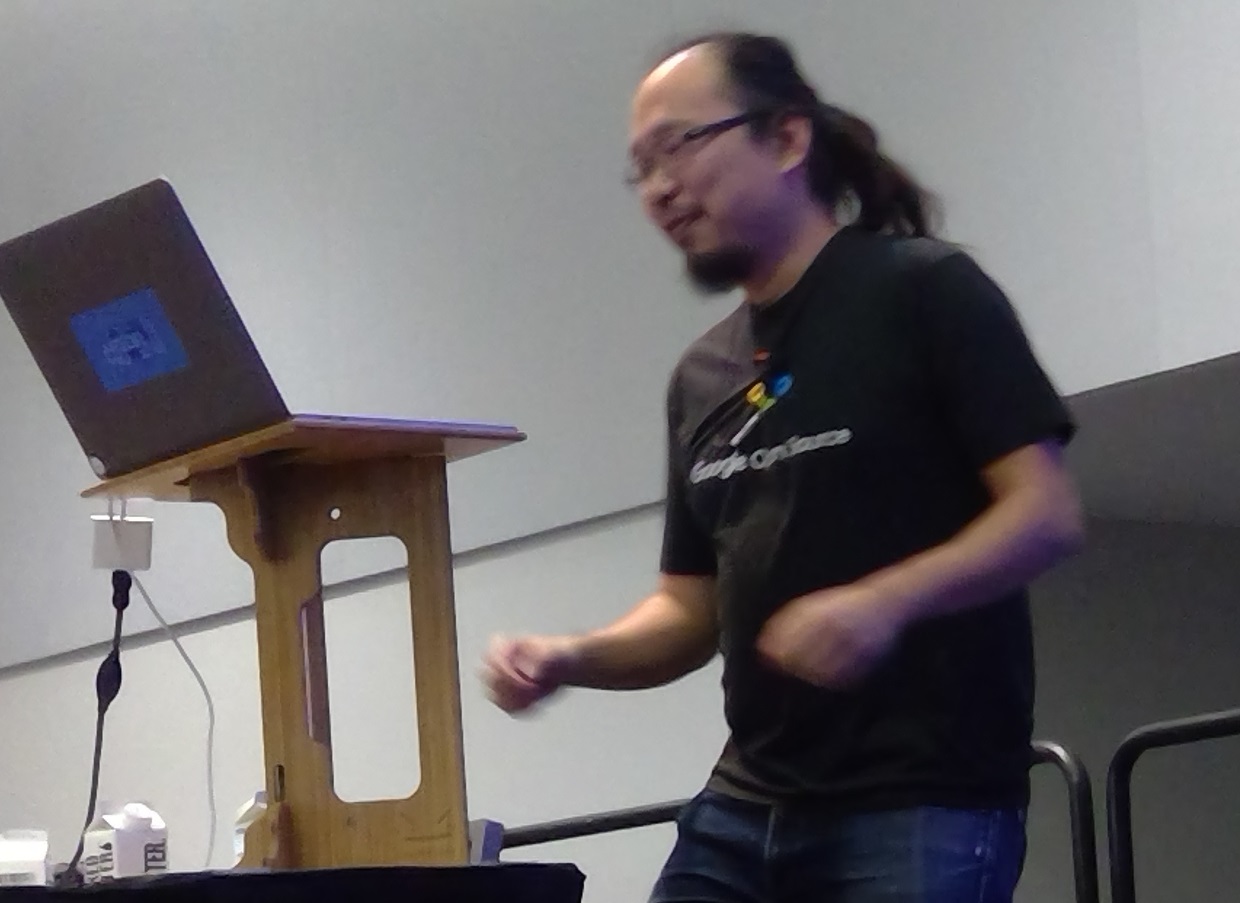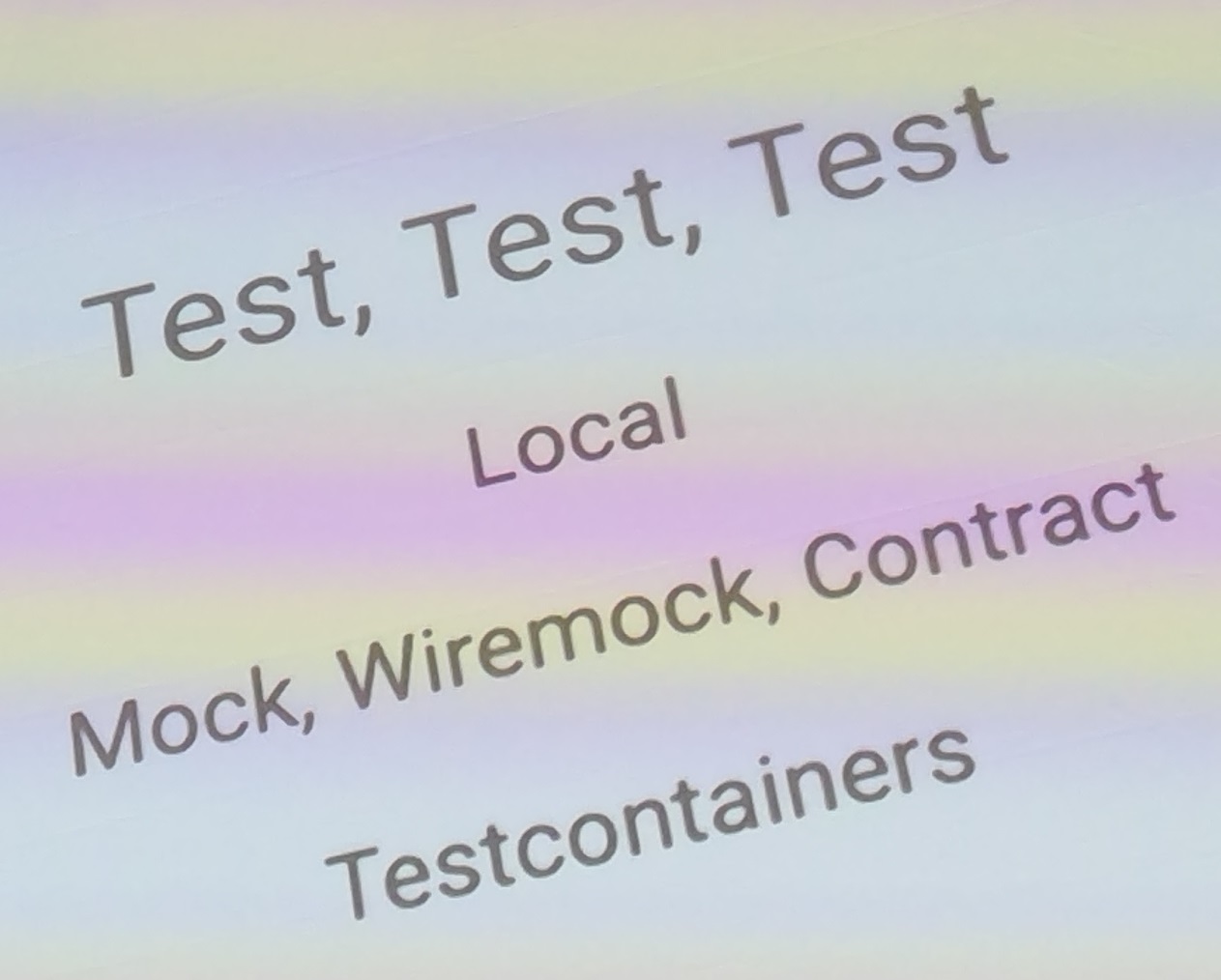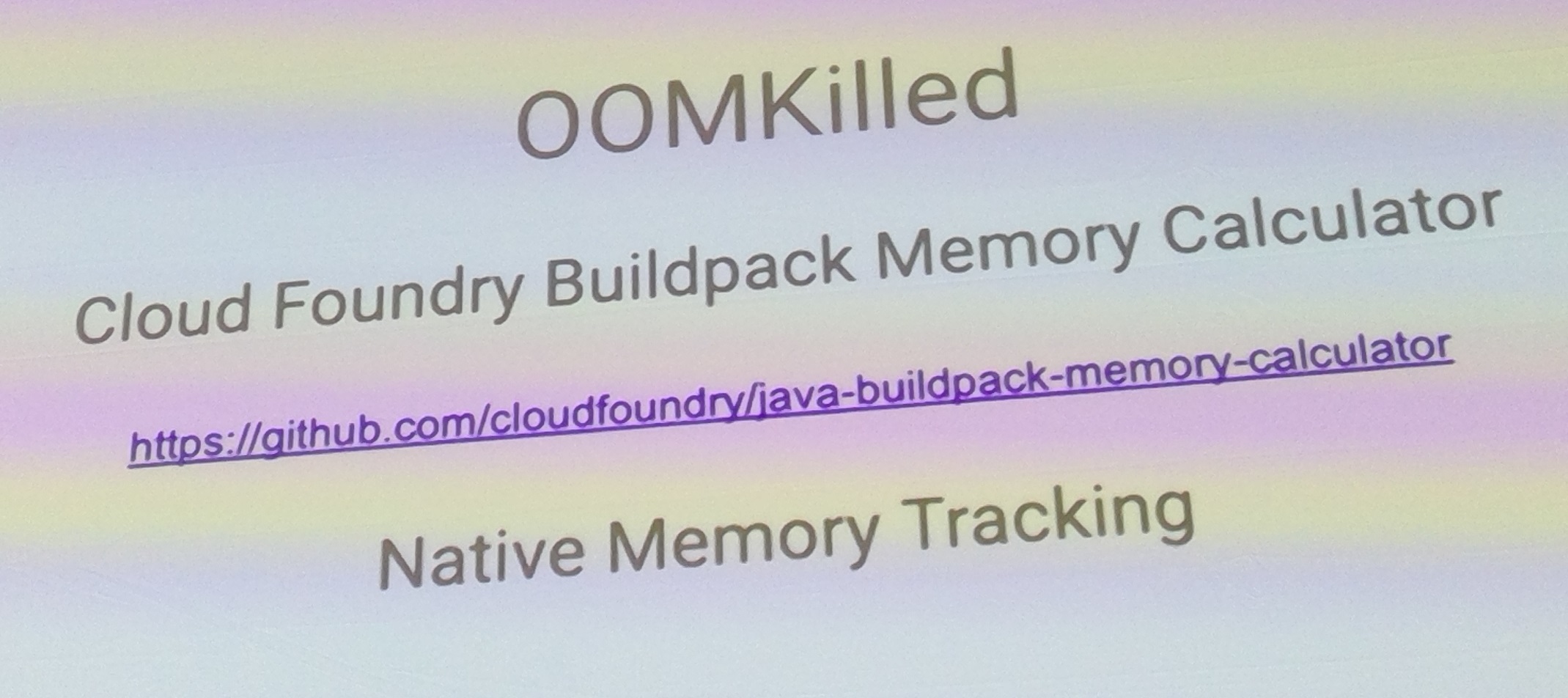Oracle Code One 2019: Ray Tsang
Raw notes from Ray’s @saturnism session. Ray is always in motion.

Surprised that he spent some minutes of his valuable time on the old “oasis in the desert” story. Don’t get me wrong, it’s a great story, and he tells it very well, but these sessions are only 45 minutes long. He only spent 3 minutes on it, so I guess it’s fine.
Your App
- Don’t start with necessarily start with Kubernetes. Follow best practices. Start with the Twelve-Factore App!
Test

Containers
-
Runtime environment is your responsibility now.
-
You’ll need a dedicated team for container hygiene.
Choose a JDK
-
Container aware
-
OpenJDK 8u192 or above
-
Showed the
MaxHeapproblem: if you don’t specify, it will take the entire available memory, causing Docker to kill you, to illustrate the non-container aware JDK problem.- -XX:+UseParallelGC
-
Two types of memory usage in Java: Heap, Native Memory Usage

Docker Tips and Tricks
http://ridingthecrest.com/blog/2017/02/23/ray-tsang-docker-tips-notes.html
Just Jib It
Jib is a maven plugin, that creates a Docker container . jib-maven-plugin.

-
This jib thing looks really awesome. It has full configuration and much easier than any docker maven thing I’ve seen.
https://github.com/GoogleContainerTools/jib/tree/master/jib-maven-plugin
Local Kubernetes
-
k3s, k3d, kind, minikube
-
k3s is good for linux environments.
-
But it looks like the Docker for Mac built-in Kubernetes.
Keep Base Deployment Simple
The hardest part is to write the yaml file.
k create deployment -oyaml --dry-run
k create svc -oyaml --dry-run
-
Still need to configure
resourcesdictionary. requests, limits, memory, etc. -
Still need to configure liveness (are you alive) and readiness (are you ready to accept traffic) probes.
-
lifecycle-
SIGTERM.
-
preStop, httpGet, exec tcpSocket
-
-
Put the healthchecks on a separate port, so you can put a network security group around it.
Some skaffold thing
- Supports debugging. Very nice.
kustomize
- kustomization.yaml